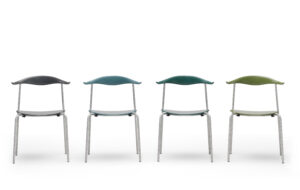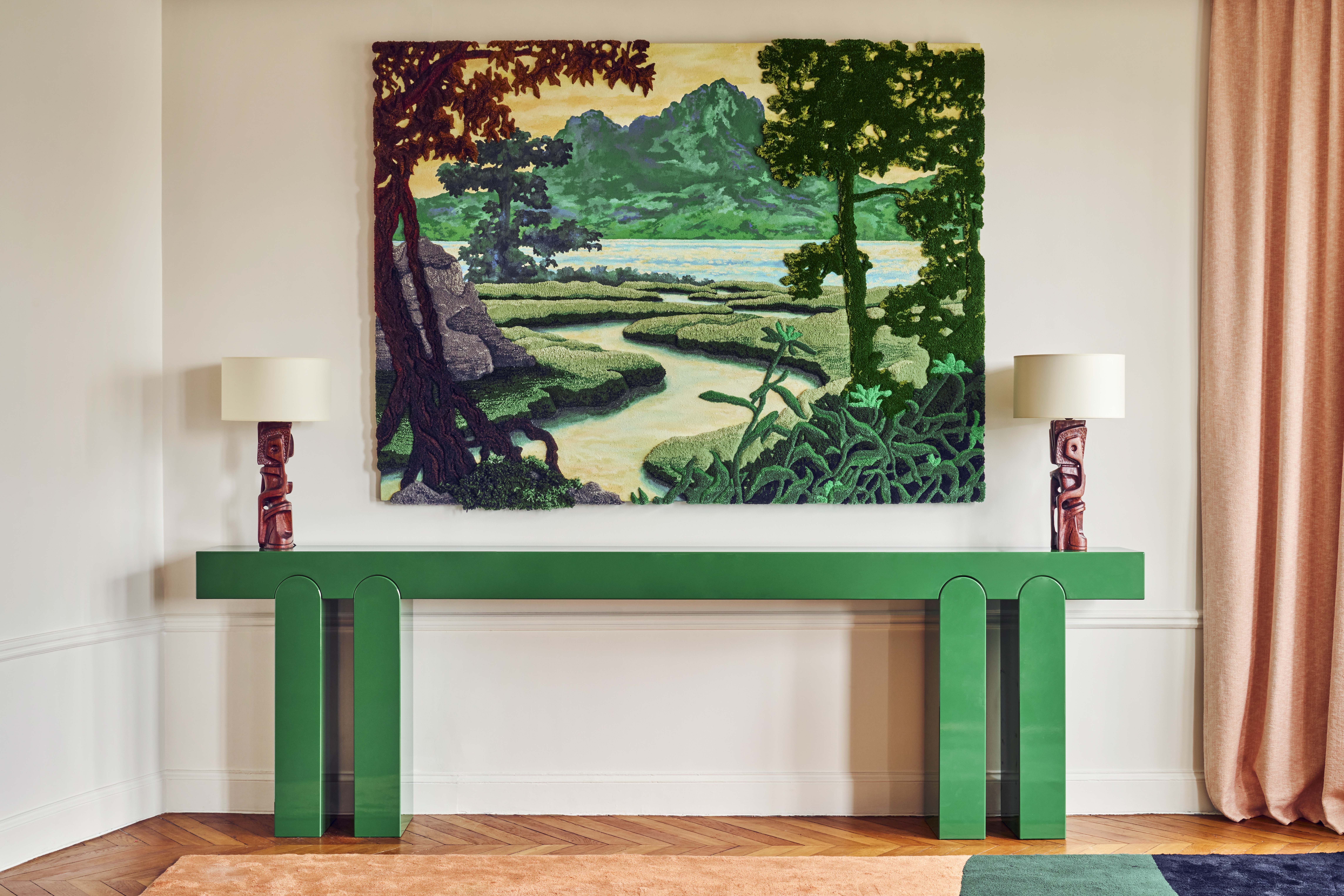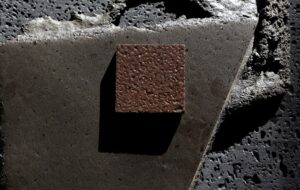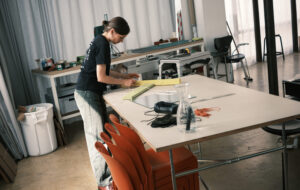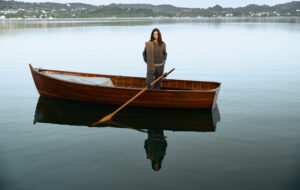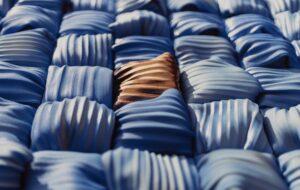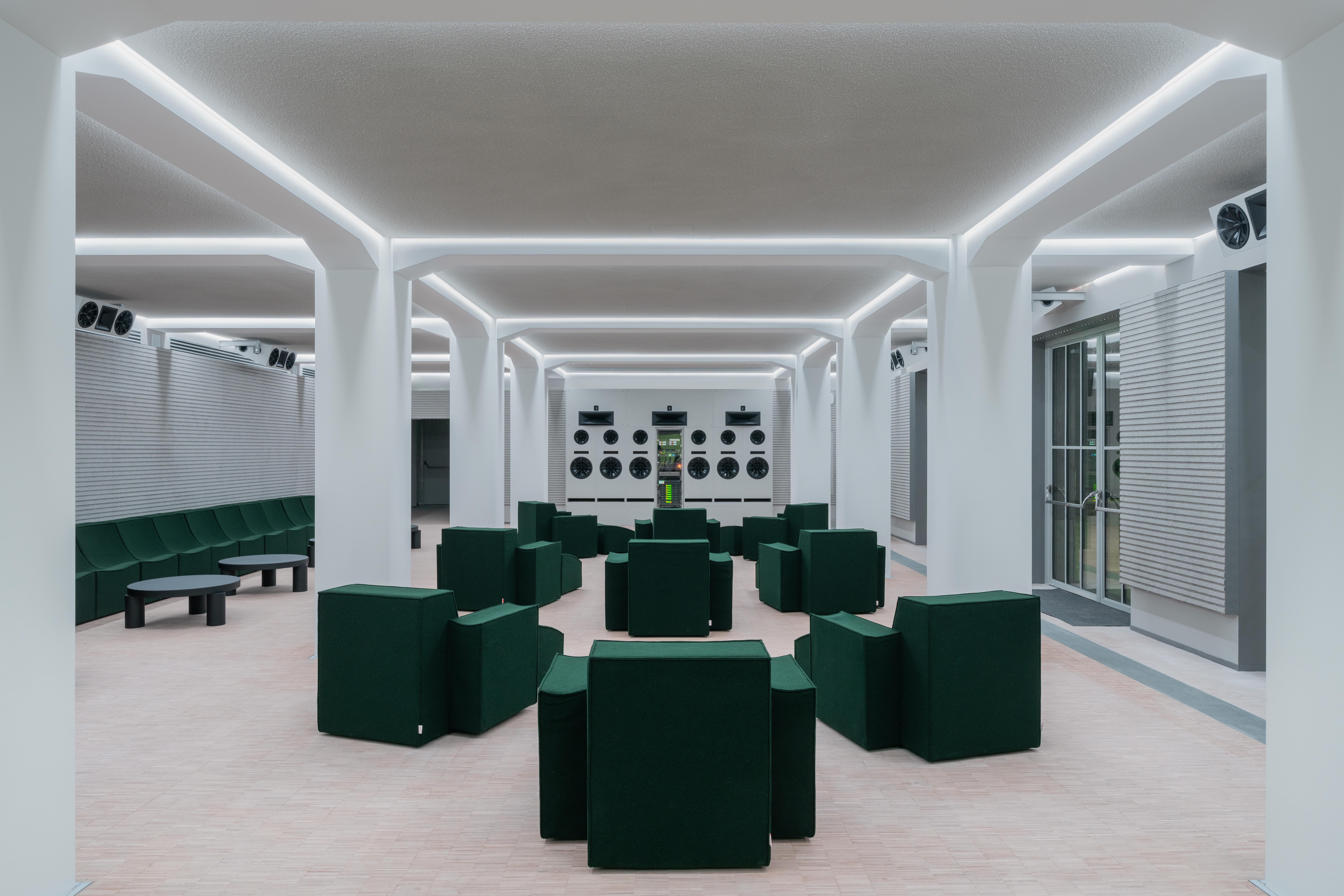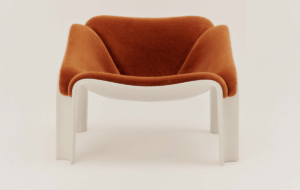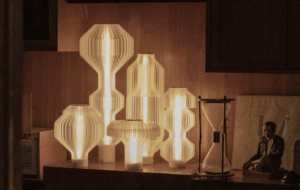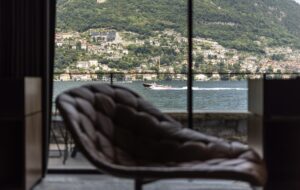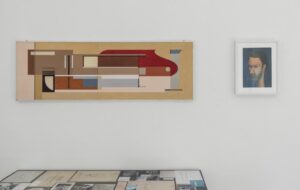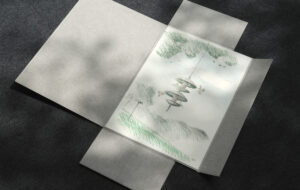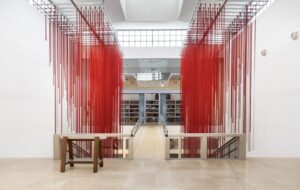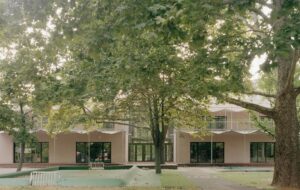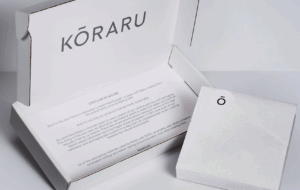


words Marcus Fairs
“Design is really simple. It makes you want to buy. So by doing design I get money but I don’t think I’m doing much for the artistic part of me. In my opinion art is more about grabbing someone’s heart than design.”
It’s a sentiment you often hear from designers frustrated by their discipline’s lowly position in the cultural hierarchy. But when it comes from Japanese designer Tokujin Yoshioka, it’s hard not to raise an eyebrow. For Yoshioka’s work blends a designer’s eye for materials and form with a bad artist’s habit of dressing his work in dodgy conceptual narratives.
His Swarovski Crystal Palace installation during Tokyo Design Tide is a case in point. Held in the mausoleum-like entrance of the Meiji Memorial Picture Gallery, this featured a giant version of the Stardust chandelier he produced for Swarovski’s show in Milan last April suspended from the building’s dome. The cube-shaped object was made up of 20,000 crystals, and the underside acted as a screen, projecting an image of a woman’s face that was reflected on the black floor below.
During the opening night “performance”, a choir of Japanese schoolboys filed into the pitch-black lobby bearing electric candles and stood in a circle around the chandelier, whereupon they sang what sounded like a monastic chant. Then the female visage on the chandelier began to recite the story of how Yoshioka came to create this particular piece in a droning American accent, backed by electronic mood music. The narrative, titled “A Dream of Light Beyond Time and Space,” related how Yoshioka had a dream featuring sparkling lights shortly after meeting crystal heiress Nadja Swarovski, and contained inane lines such as, “Stardust pilots us beyond the world we know into images projected by transparent crystal, and creates form in what is intrinsically formless,” and, “It is Tokujin Yoshioka’s narrative that creates the future of a universe”. It was nauseatingly sanctimonious.
But we decide to give Yoshioka the benefit of the doubt and go ahead with the pre-arranged interview. After all, the 38 year old is one of Japan’s leading designers and one of the few – with the notable exception of Naoto Fukasawa – to have made any impression on the European furniture scene. His 2002 Tokyo Pop chair for Driade, in particular, is regarded as something of a classic.
The meeting – held in a wing of the picture gallery hosting an exhibition of Yoshioka’s work – is a struggle from the start, and not only because of the difficulties of conducting a conversation through an interpreter. Yoshioka’s answers are minimal, bland and often unhelpful. Maybe he’s shy, maybe he’s bored or maybe he’s tired – it’s hard to tell. Or maybe he simply has nothing to say.
How, I ask, did his collaborations with Driade and Swarovksi come about? “I’ve no idea. My concept has always been to create something new, something no-one has done before.” Right … how does he rate Tokyo as a place to be a designer? “Maybe it’s the same everywhere in the world but we have so much advanced technology here in Tokyo. This is the place where I grew up.” Okay … does he see Tokyo emerging as an important design hub, what with events like Design Tide and 100% Tokyo? “Hmmmmmmm. It’s up to us how design can be. I always want to have some significant meaning to my work.” But that doesn’t answer the question. Is Tokyo becoming important, like, say, Milan? “I think so. It’s getting really exciting. In Japan our main audience is students. In Milan it’s buyers. Maybe we can try some other approach to make Tokyo interesting.” Such as? “I don’t know. I’m too busy focusing on my work.”
Yoshioka was born in 1967 and studied at Kuwasawa Design School in Tokyo. He briefly worked for furniture designer Shiro Kuramata before spending four years working with fashion designer Issey Miyake, for whom he designed retail interiors and exhibitions before setting up his own studio in 2000. What was it like working for these two legendary figures? “Kuramata and Miyake were similar kinds of artists. They always look into the fundamental elements when they work. They are like small boys – they’re so curious.” Does Yoshioka think he shares these qualities? “Yes”. I suggest
that his Honey Pop chair, the honeycomb paper precursor to Tokyo Pop, is reminiscent of Miyake’s work. “I don’t see it,” he deadpans.
Honey Pop is made of layers of tissue paper bonded with strips of glue and cut to shape, then opened up like a paper Christmas decoration to create a three-dimensional object. “It was wrapping paper for chocolates,” he says. “Then I changed the thickness of the object and made some experiments.” The piece was later recreated in polyethylene by Driade, becoming the Toyko Pop chair. With its ghostly white form, it is reminiscent of La Chaise, the 1948 collaboration between Charles Eames and Eero Saarinen, I suggest. “Ha ha ha.” Is it a knowing reference to this classic piece? “I simply made a plastic chair inspired by the paper one.”
Current work includes a mobile phone for Japanese brand KDDI – his Media Skin handset is the latest in the AU Design Project series that has produced classics including Naoto Fukasawa’s Infobar and Marc Newson’s Talby – and a hush-hush project for the 2006 Milan furniture fair. “Next year I’m participating in the Milan Salone, making chairs. It’s not for a company – it’s just pure, work I want to create. I want to create a chair that no-one has created before.”
What is it then? “I can’t say specifically. I saw a picture in National Geographic magazine and I thought this was the next era.” What was the picture? “It’s nothing to do with design. But I cannot tell you. It’s a secret project. But it may be related to [the Swarovski] project.” Will it have crystals? “No crystals.”
Yoshioka says he designs most of his projects in his head. “I don’t make so many sketches,” he says. “Maybe you’ve seen my sketches in magazines but I always do them at the request of magazine editors.” So you do them afterwards? “Yes. I create everything – 70 per cent of my ideas – in my head. I conduct tests to see if I can put my image into reality. Then I produce computer graphics in order to communicate my idea to other people.”
While he is best known abroad for his furniture and for products such as his ToFU light for Yamagiwa, he is better known in Japan for his interiors – he still designs boutiques for Miyake – as well as his exhibition and event projects. These tend to display a technological theatricality, such as product launches he has curated for Peugeot and Hermès and his design for the Robot Meme exhibition of 2001 at the National Museum of Emerging Science and Innovation in Tokyo. The show, which examined the history and future development of robots, featured row after row of transparent humanoid forms – 700 in all – standing shoulder to shoulder.
“When it comes to space design, I prefer installation works, because that’s something that can move, can touch everyone,” he says. “When people create something commercially, they focus on selling things. That’s different in my work.” This anti-corporate line is undermined later when Yoshioka insists on being photographed in front of the huge banner bearing both his name and that of Swarovski, his sponsor (thankfully our photographer managed to sneak a few shots that omit this).
I ask Yoshioka what being a designer means to him. “I don’t want to stay in one category,” he replies. “I want to cross boundaries. I think I’m in the middle of interior and product, interior and architecture. Sometimes my work is a bit artistic and other times it’s design. I think my concept lies in between the boundaries. But by the time I’m 50 I want to be an artist.”
And give up design? “When I grow old my last days will be doing things I really want to do.” What is the difference between being an artist and being a designer? “I have no comment on that. There are many kinds of artist and many different concepts in art, so it’s really difficult to describe.”

